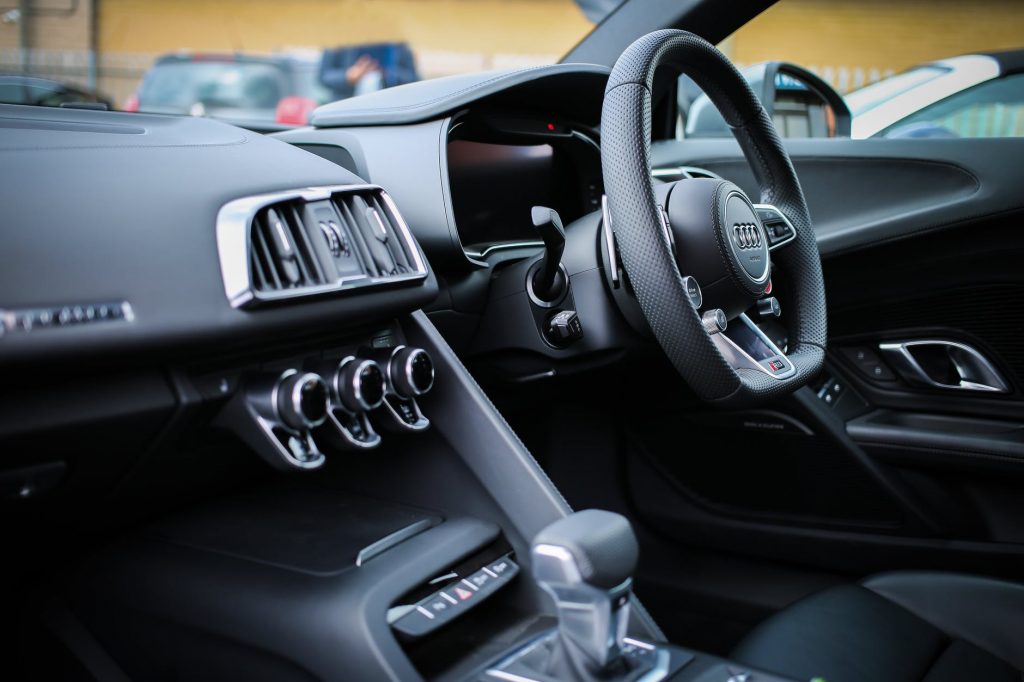
In the 1980s, law enforcement began mounting smaller cameras in vehicles to capture video and audio evidence both inside and outside the car. Now, newer civilian vehicle models advertise similar features, including back-up cameras and dashcams.
The worldwide vehicle dashcam industry is expected to grow by 17.3% over the next five years, reaching a value of $5,380 million by the year 2023, according to MarketWatch. Civilians have started leveraging dashcam technology for a variety of reasons and in multiple ways.
How Do Dashcams Work?
A dashcam is a small video camera that’s mounted to a vehicle’s dashboard. The camera can face the front of the vehicle to record where the driver is going and their actions, or the rear of the vehicle to record the passengers’ actions. Law enforcement dashcams usually face the front, while taxi drivers, for example, may position their cameras facing the rear.
Most newer vehicles come equipped with back-up cameras and parking assist cameras. While these cameras help the driver remain aware of their surroundings, they’re not as useful for evidence if you’re involved in a car accident. These cameras usually record over old files unless you manually save footage or the vehicle has an accident sensor. In some cases, the cameras in these models don’t save video footage at all.
Why Do People Have Dashcams?
Dashboard cameras have advanced over the years into small and unassuming electronics that are easily mounted in any location within a vehicle. Drivers may opt to install dashcams in their cars for liability protection.
If you’re in an accident or accused of a crime, a San Diego car accident lawyer may be able to use the footage from a dashcam as indisputable evidence. Dashcams may also be used in some industries to protect workers while also holding them accountable for their actions.
Law Enforcement
Law enforcement vehicles are equipped with dashcams to record officer and civilian interactions. If there’s a dispute or a civilian is charged with a crime, the footage may be used in a court of law to prove what happened.
Truck Drivers
Truck drivers are required to drive safely and follow certain laws and regulations. Dashcams can help hold them accountable for following these rules and the footage may help determine if they were at fault after a car accident.
Taxi and Shared Ride Drivers
Dashcams mounted on taxis or rideshare vehicles help protect both drivers and passengers. These cameras usually face the rear of the vehicle so they can record incidents that may occur between drivers and passengers. If there’s a dispute, the footage may be used to settle it.
Are Dashcams Legal?
State governments can make their own rulings on whether dashcams may be legally installed in private vehicles. Some states may allow for dashcam installation but have strict guidelines on the type of camera used and where it’s mounted. These placement rules are related to visibility and privacy issues.
For example, in California, it’s legal to install a dashcam as long as it follows the law’s specifications and also records audio. Since the camera must record audio, it’s your responsibility as the vehicle’s owner to inform your passengers that the camera is present and recording audio when they step into your vehicle. The camera must be able to store data and the vehicle owner is responsible for handling this data safely and legally.
How to Install a Dashcam Legally
If it’s legal in your jurisdiction to mount a dashboard camera, it’s important that you review other legalities associated with how to mount the camera. There may be restrictions on the size of the camera, its capabilities, and where it’s located.
Again, in California, there are restrictions on what you can mount to your windshield and dashboard to ensure your view isn’t obstructed while driving. California law states that a dashboard camera may be mounted in one of the following ways:
- As a 7-inch square in the lower corner of the windshield, farthest from the driver.
- In a 5-inch square in the lower corner of the windshield closest to the driver.
- In a 5-inch square mounted in the center, inside the windshield.
Wherever the camera is mounted, the law also states it cannot interfere with airbag deployment or be near where the airbag may deploy.
Since laws may vary between states, do your research if you’re planning an out-of-state road trip to ensure you’re following the dashcam laws in other jurisdictions.
Are Dashcams Worth It If You Get in an Accident?
Dashboard cameras in private vehicles may be able to capture indisputable footage of events that could be used as evidence, if necessary.
Clear Evidence
Dashboard camera footage is unbiased. It can offer clear evidence of who was at fault for an accident and the specifics of the event. A dashcam records video, audio, and some cameras even make note of a vehicle’s speed at the time of an incident. In some states, including California, even if this camera footage is captured in a private vehicle, it’s admissible in court as evidence.
Identify Drivers at Fault
If you’re involved in an accident and the other driver disputes the details, you have evidence with your camera’s footage, which can prove who is at fault. You may also be able to capture a driver’s details after a hit-and-run with a dashcam rolling.
Help Prove Your Case
Since a dashcam provides indisputable details by simply recording the video and audio of what happened, you may be able to use this footage to prove your case. If your state allows private dashcam footage to be admissible as evidence, it may be helpful to prove you’re telling the truth about the events that occurred.
While most newer vehicle models come equipped with back-up and parking cameras, many car owners are also installing their own private dashcams. If a dashcam is legal in your state, its footage may be helpful in proving who’s at fault in a car accident.





